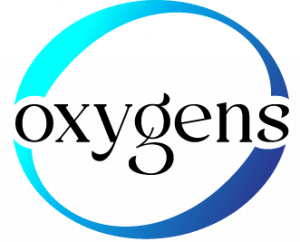Hyperbaric Oxygen Therapy (HBOT) and Its Impact on Cancer

Cancer is a complex disease characterized by several hallmarks, including immune system evasion, inflammation, genome instability, enabling replicative immortality, activating invasion and metastasis, sustaining proliferative signalling, evading growth suppressors, resisting cell death, inducing angiogenesis, and metabolic reprogramming [1]. Tumor-hypoxia, a condition of low oxygen levels within the tumor, plays a central role in promoting an aggressive phenotype and limiting the effectiveness of cancer treatments like radiotherapy, chemotherapy, and immunotherapy, thereby worsening the prognosis in oncological patients [2]. Thus, targeting tumor hypoxia and its downstream effectors have been proposed as a potential therapeutic approach in cancer management [3,4,5].
In this line, accumulating evidence supports the role of HBOT in the inhibition of tumor growth and therapy success, by three main mechanisms: (1) By limiting cancer-associated hypoxia, (2) through the generation of ROS and RNS, and (3) restoring immune function [6]. Studies show the promising role of HBOT in a wide variety of malignancies, including breast cancer [7], prostate cancer [8], head and neck cancer [9], colorectal cancer [10], leukemia [11], brain tumours [12], cervical cancer [13], and bladder cancer [14].
HBOT Hyperbaric oxygen Therapy has been studied as part of the treatment regimen for cancer, as a radiotherapy adjuvant, and as a chemotherapy adjuvant [15]. Thews & Vaupel [16] compared the efficacy of normobaric oxygen therapy (NBOT) at 1 atm versus HBOT at 2 atm oxygenation, reporting broader reductions of hypoxia under hyperbaric conditions. However, even at high pressure oxygenation, tumor hypoxia was not completely removed, showing that HBOT alone efficacy is limited. Importantly, while HBOT was associated with increased angiogenesis, these effects were not significant in tumor cells, making its use potentially important in cancer management [17].
A study conducted by Pande et al. [18] revealed that HBOT-treated mice initially showed a decrease in tumor progression, but a tumorigenic effect was observed post-therapy, possibly due to impaired DNA repair, mutagenicity, chromosomal aneuploidies, altered blood supply, and nutrient changes. However, Lu et al. [19] proposed a combined use of HBOT with ultrasound-guided transrectal prostate puncture in prostate cancer patients to create a hyperoxic environment within the tumor, leading to DNA damage and cell cycle arrest, providing the basis for future research.
Tumor hypoxia is associated with metabolic reprogramming of tumor cells, also known as the Warburg effect, where cancer cells refrain from performing oxidative phosphorylation [20]. Poff et al. [21] described the combined effects of HBOT and a ketogenic diet in a murine model, preventing tumoral metastasis and expanding overall survival. Furthermore, HBOT alone or combined with low glucose and ketone supplementation also exerts multiple benefits against late-stage metastatic cancers by increasing ROS and oxidative stress production [22].
Regarding radiotherapy, approximately 50% of cancer patients receive this therapy, contributing up to 40% of curative success for cancer [23]. HBOT has been investigated in combination with radiotherapy, showing a radiosensitizing effect on glioblastoma (GBM) cells and improving outcomes for recurrent high-grade glioma (rHGG) patients [24,25]. HBOT has consistently demonstrated its effectiveness against radiation-induced injury, particularly in head, neck, anus, rectum, and bone, according to the UHMS [26] and the ECHM [27]. Cochrane review [28] evidenced that HBOT is associated with improved outcomes in injured tissues, osteoradionecrosis following tooth extraction in an irradiated field, and various other conditions.
The combined use of HBOT plus chemotherapy has also reported certain benefits. Brewer et al. [29] demonstrated the effectiveness of using HBOT to prevent chemotherapy-induced neuropathy, attributed to the various implications of HBOT in neuronal activity and signaling [30,31,32]. Kawasoe et al. [33] observed that an integrative strategy of carboplatin plus HBOT significantly reduced mortality in mice with osteosarcoma cells. Similarly, the combination of paclitaxel and carboplatin with HBOT and hyperthermia showed promising results for treating patients with non-small cell lung cancer and multiple metastasis [34].
Despite these promising results, the use of HBOT and chemotherapy may also represent a contraindication for some patients. Certain combinations, such as HBOT with doxorubicin, bleomycin, or cisplatin, may lead to synergic cardiotoxicity, pulmonary toxicity, or impaired wound healing [35]. Careful consideration is necessary to avoid undesired effects. Additionally, further strategies could be considered targeting tumor hypoxia and functioning as therapeutic adjuvants, like physical activity [36].
Overall, HBOT holds immense potential in cancer management, and ongoing research is required to establish its efficacy in different types of cancer and its most appropriate use in a comprehensive approach to cancer treatment.
References:
[1] Hanahan D, Weinberg RA. Hallmarks of cancer: the next generation. Cell. 2011 Mar 4;144(5):646-74.

